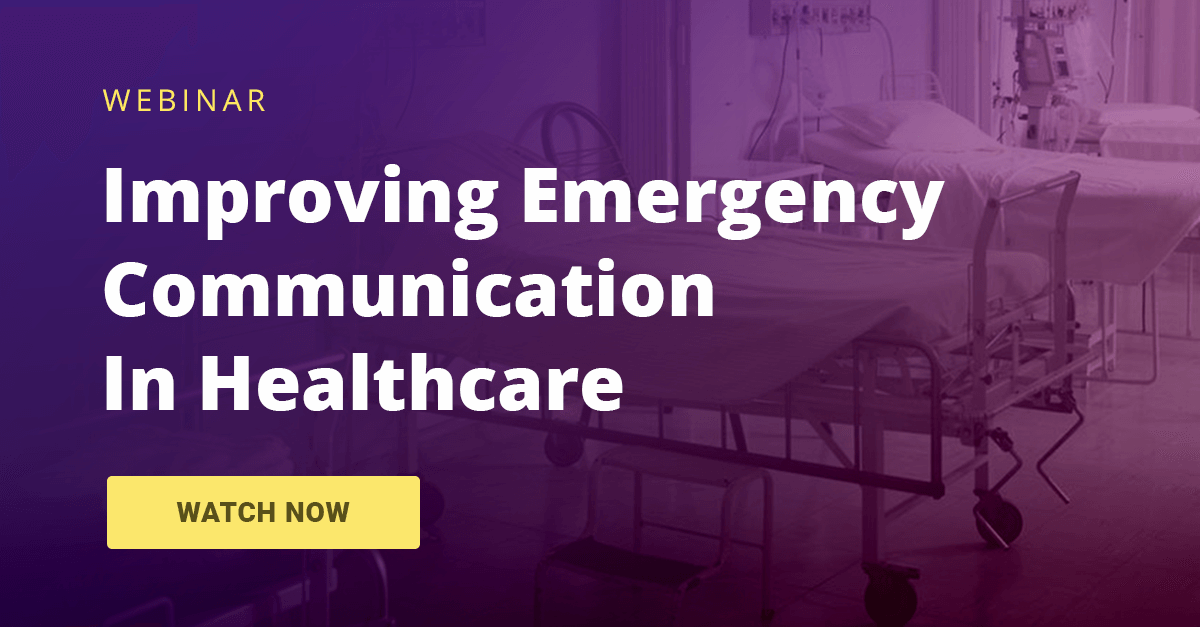Why Community Outreach Is A Critical Requirement Of The CMS Rule
As many healthcare providers work through the requirements of the new CMS Emergency Preparedness Rule, much of it looks familiar. For accredited agencies, they may find that the accreditation work also fulfills the CMS requirements.
But what is new for many healthcare organizations is the community outreach component. The CMS rule requires healthcare organizations to include other community healthcare providers in their planning, training and exercises.
“This rule has been a long time coming – it originated in the aftermath of Hurricane Katrina and the first draft circulated in 2010,” said Meg Nash, MPH, during a recent AlertFind webinar.
“It creates a level playing field for healthcare providers across the country with a focus on community outreach. This way, everyone can work together somewhat seamlessly and we can return patients to care, protect business continuity and ensure our staff and patients are safe during a disaster and through recovery.”
Supporting Patient Care
The main goal of the rule is to ensure that healthcare organizations are thinking through how they would handle a variety of emergency situations. If some or all of a major hospital is damaged, where would those patients go? What types of facilities are close by that could take the patients?
Once the patients are transferred, other questions need to be addressed. How will organizations staff during these emergencies? If patients are moved to an ambulatory surgery center, how will they be fed? If a patient needs specialty equipment or medicine, how will that be provided? How will continuity of care be documented? How will a patient’s family be notified?
These are just a few questions that organizations will need to think through as part of the new CMS requirements.
Planning For Special Populations
On top of this, healthcare organizations need to think about the specialized needs of pediatric patients and those requiring psychiatric care. Treating pediatric patients requires a wide range of specialized equipment and medical expertise. Transferring pediatric patients requires planning for these special needs.
Like pediatrics, psychiatric care also has its own unique requirements. For example, if a patient is held involuntarily, the medical staff needs to monitor that time. But this isn’t a common occurrence outside of psychiatric care, so it’s not something other facilities would be familiar with.
This is just one example of the many issues that need to be considered when doing emergency preparedness planning.
Understanding Training Requirements
The CMS rule states facilities must demonstrate completion of two exercises per year, with one full-scale exercise and one tabletop exercise. If a facility activates its emergency plan due to a disaster, it becomes exempt from the full-scale/individual based requirement for that year. That secondary requirement for a table-top exercise or exercise of choice still applies, though. Ultimately, surveyors want documented proof that you’re doing an annual full-scale community-wide exercise and an additional testing exercise of your choice.
An example of a full-scale exercise is a full-scale hospital evacuation, where a local nursing home plans how they would take on additional patients. This allows both providers to learn about what the other needs and where any potential gaps are so they can be addressed in the emergency planning.
The Case For Collaboration
Healthcare organizations need to collaborate on a strategy – not just because it will help them meet the CMS rule's requirement – but because of the consequences for not doing so. For example, the health centers in Harris County, Texas, collaborated on a radio-based communication system prior to Hurricane Harvey in 2017. And while Nash said that the system was a good one, it almost completely failed because of too much use on one channel. They have since learned from this, said Nash.
Improving Your Planning
Nash recently provided much deeper guidance for healthcare organizations on how to comply with the CMS Emergency Preparedness Rule during AlertFind’s recent webinar, “Improving Emergency Communications Under The Emergency Preparedness Rule: Are You Ready?”
In it, she goes into more detail about the community outreach requirements, what surveyors are looking for and how other healthcare organizations have addressed these requirements in their own plans.
Watch the Webinar Now

You are well on your way toward protecting your staff and organization.
Take the next step toward protecting your organization by learning more about emergency notification systems and the vital role they play in your emergency preparedness plan.
